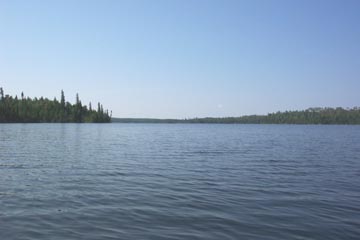As well, it varies between river running and lake travel. We have included some videos.
When we first planned the trip, we had intended to start and finish at Chapleau, but after talking to Regan at
Missinaibi Headwaters Outfitters, we revised our plans to start at Racine Lake and finish at Westover Lake. This would avoid the high boat traffic areas around Chapleau and an apparently brutal 1500m portage at the end of the trip.
